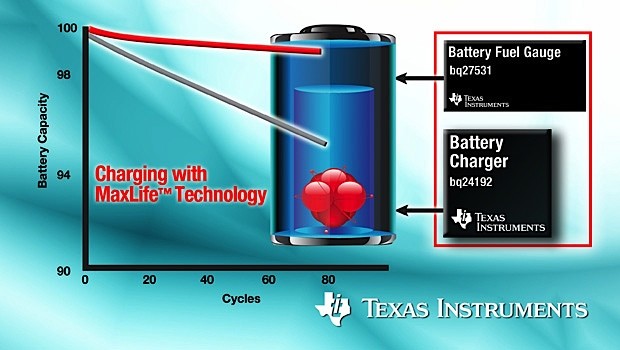
(high res image from Engadget)
From the original TI press release:
Texas Instruments Incorporated (TI) (NASDAQ: TXN) today introduced two power management chipsets with TI's patented new MaxLife™ fast-charge technology, which allows consumers to charge single-cell Li-Ion batteries faster and experience longer battery life. The bq27530 and bq27531 fuel gauge circuits, coupled with TI's bq2416x and bq2419x chargers, optimize battery performance using the highest possible charge rates with minimal battery degradation. For samples and evaluation module, visit www.ti.com/maxlife-pr.
Mobile phone users are frustrated when their batteries' charge doesn't last as long after months of daily charging and discharging. TI's MaxLife technology leverages an innovative degradation modeling system to minimize charge time while extending battery service life – as much as 30 percent according to lab tests. Based on TI's popular Impedance Track™ battery capacity measurement technology, the MaxLife algorithm accurately predicts and avoids charge conditions that could degrade the battery.
In retrospect, it's perhaps not surprising that clever software and electronics can do a lot to alleviate this common problem with sealed batteries. After all, many users of Apple iPhones, Nokia N8s (etc. - see here for my list of heroes and villians) report excellent capacity after a year or two of use, despite my dire warnings, due to a careful top up/charging regime and avoidance of blatant misuse. So if this canniness in users could be taken, codified and implemented in hardware and software, then why shouldn't every smartphone with a sealed battery see improved longevity in the future?
